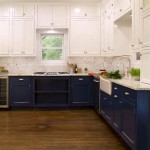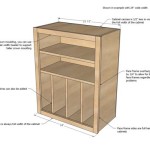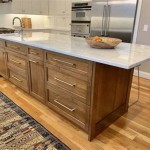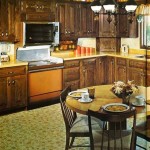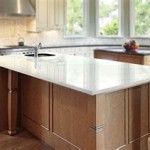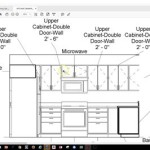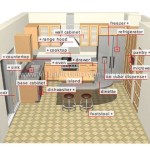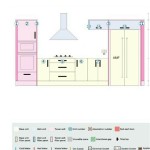How Much Does It Cost For Refacing Kitchen Cabinets?
Kitchen cabinet refacing is a popular renovation option for homeowners seeking to update the appearance of their kitchen without the extensive demolition and expense associated with a full cabinet replacement. Refacing involves replacing the cabinet doors and drawer fronts while applying a new veneer to the existing cabinet boxes. The cost of refacing kitchen cabinets can vary significantly depending on several factors, making it crucial for homeowners to understand these variables to budget effectively.
This article aims to provide a detailed overview of the cost factors involved in kitchen cabinet refacing, helping homeowners make informed decisions about their renovation projects. We will explore the different materials, labor costs, project scope, and regional variations that influence the overall price of refacing kitchen cabinets.
Key Factors Influencing Refacing Costs
Several elements contribute to the overall cost of refacing kitchen cabinets. These factors should be carefully considered when planning a kitchen renovation project to ensure an accurate budget and avoid unexpected expenses.
1. Materials Used: The choice of materials for cabinet doors, drawer fronts, and veneers plays a significant role in determining the refacing cost. Common material options include wood veneer, laminate, and rigid thermofoil (RTF). Each material offers varying levels of durability, aesthetics, and price points.
Wood veneer is a thin layer of real wood applied to the surface of the cabinet boxes and new doors. It offers a natural wood appearance and can be stained or painted to match the desired aesthetic. Wood veneer is generally more expensive than laminate or RTF due to the higher cost of real wood and the specialized application process. The type of wood used for the veneer, such as oak, maple, or cherry, also impacts the price.
Laminate is a synthetic material made from layers of paper and resin bonded together. It is a more affordable option compared to wood veneer and is available in a wide range of colors, patterns, and textures. Laminate is durable and easy to clean, making it a popular choice for budget-conscious homeowners. However, it may not offer the same aesthetic appeal as real wood.
Rigid thermofoil (RTF) is a vinyl material that is heat-sealed to a medium-density fiberboard (MDF) core. It is a seamless, durable, and moisture-resistant option, which makes it suitable for kitchens. RTF is available in various colors and styles, including those that mimic the look of wood. It's generally a mid-range option in terms of cost and durability.
2. Kitchen Size and Cabinet Quantity: The size of the kitchen and the number of cabinets to be refaced directly impact the overall cost. Larger kitchens with more cabinets require more materials and labor, resulting in a higher project cost. The complexity of the cabinet layout can also influence the cost. Cabinets with intricate designs or unusual shapes may require more time and skill to reface, increasing the labor costs.
To provide a general estimate, refacing a small kitchen with approximately 10 cabinets could cost significantly less than refacing a large kitchen with 30 or more cabinets. The price per cabinet typically decreases as the number of cabinets increases due to economies of scale. However, the total cost will still be higher for larger kitchens.
3. Labor Costs: Labor costs constitute a significant portion of the overall refacing expense. The cost of labor depends on the complexity of the project, the contractor's experience and expertise, and the regional labor rates. Hiring a professional contractor ensures that the refacing is done correctly and efficiently, minimizing the risk of errors and ensuring a high-quality finish. However, professional installation can be more expensive than DIY options.
Labor costs typically include the removal of existing cabinet doors and drawer fronts, preparation of the cabinet boxes, application of the new veneer or laminate, installation of the new doors and drawer fronts, and any necessary hardware installation. Some contractors may also include minor repairs to the cabinet boxes, such as filling in scratches or dents.
4. Hardware and Accessories: The cost of hardware, such as hinges, knobs, and pulls, can add to the overall refacing expense. The price of hardware varies depending on the style, material, and quality. High-end hardware can significantly increase the cost, while more affordable options are available for budget-conscious homeowners. The quantity of hardware needed also depends on the number of cabinets and drawers being refaced.
In addition to hardware, other accessories, such as crown molding, light rails, and decorative panels, can enhance the appearance of the refaced cabinets. These accessories add to the overall cost but can create a more customized and upscale look.
5. Additional Services: Depending on the scope of the project, additional services may be required, such as new countertop installation, backsplash replacement, or modifications to the cabinet layout. These services can significantly increase the overall cost of the kitchen renovation but can also enhance the functionality and aesthetics of the kitchen.
For example, if the existing countertops are outdated or damaged, homeowners may choose to replace them during the refacing project. Similarly, a new backsplash can complement the refaced cabinets and create a cohesive design. Modifications to the cabinet layout may involve adding or removing cabinets to improve the flow of the kitchen.
Estimating Refacing Costs: A Range of Budget Scenarios
To provide a clearer understanding of the potential cost range for kitchen cabinet refacing, it is helpful to consider different budget scenarios based on the size of the kitchen, the materials used, and the scope of the project.
Budget-Friendly Refacing: A budget-friendly refacing project typically involves using laminate or RTF for the cabinet doors and drawer fronts, along with basic hardware and minimal additional services. This option is suitable for homeowners who want to update the appearance of their kitchen without spending a lot of money. For a small kitchen with approximately 10 cabinets, a budget-friendly refacing project could cost between $1,000 and $3,000. For a larger kitchen with 30 or more cabinets, the cost could range from $3,000 to $7,000.
Mid-Range Refacing: A mid-range refacing project involves using higher-quality laminate or RTF, along with upgraded hardware and some additional accessories, such as crown molding or light rails. This option offers a balance between cost and aesthetics, providing a more customized and upscale look. For a small kitchen with approximately 10 cabinets, a mid-range refacing project could cost between $3,000 and $7,000. For a larger kitchen with 30 or more cabinets, the cost could range from $7,000 to $15,000.
High-End Refacing: A high-end refacing project involves using wood veneer for the cabinet doors and drawer fronts, along with premium hardware and a full range of additional accessories. This option offers the most luxurious and customized look but also comes with the highest cost. For a small kitchen with approximately 10 cabinets, a high-end refacing project could cost between $7,000 and $15,000 or more. For a larger kitchen with 30 or more cabinets, the cost could range from $15,000 to $30,000 or more.
These cost ranges are approximate and can vary depending on the specific factors mentioned earlier. It is always recommended to obtain multiple quotes from different contractors to get a more accurate estimate for your specific project.
DIY vs. Professional Installation: Cost Comparison
Homeowners have the option of refacing their kitchen cabinets as a do-it-yourself (DIY) project or hiring a professional contractor to handle the installation. Each option has its own advantages and disadvantages in terms of cost, time, and expertise.
DIY Refacing: DIY refacing can be a cost-effective option for homeowners who are comfortable with basic carpentry skills and have the time and patience to complete the project. The main advantage of DIY refacing is the potential for significant cost savings on labor. Homeowners only need to pay for the materials, such as cabinet doors, drawer fronts, veneer, and hardware.
However, DIY refacing can also be time-consuming and challenging, especially for those with limited experience. It requires careful planning, precise measurements, and attention to detail. Mistakes can be costly and may result in a less-than-professional finish. Additionally, DIY refacing may not be suitable for complex cabinet layouts or unusual cabinet designs.
Professional Installation: Hiring a professional contractor ensures that the refacing is done correctly and efficiently, minimizing the risk of errors and ensuring a high-quality finish. Professional contractors have the experience, expertise, and tools necessary to handle complex projects and deliver consistent results. They can also provide valuable advice on material selection, design options, and project management.
The main disadvantage of professional installation is the higher cost due to labor expenses. However, the added cost may be worth it for homeowners who want a hassle-free experience and a guaranteed result. Professional contractors typically offer warranties on their work, providing peace of mind and protection against defects.
The decision between DIY and professional installation depends on the homeowner's skills, budget, and desired outcome. If you have experience in carpentry, the time to dedicate to the project, and a smaller budget, DIY refacing might be a viable option. If you prefer a hands-off approach, want a professional-grade finish, and have a larger budget, hiring a contractor is probably the better choice.
In addition to the initial cost, consider the long-term value of each option. A professionally installed refacing project may last longer and require less maintenance than a DIY project, potentially saving you money in the long run.
Ultimately, understanding the various cost factors associated with kitchen cabinet refacing is essential for homeowners to make informed decisions and achieve their desired kitchen renovation goals.

Average Cost To Reface Cabinets By Li Foot Material And Type Forbes Home

Cabinet Refacing Process And Cost Compared To Painting

Cabinet Refacing Cost Angi

Average Cost Of Kitchen Cabinet Refacing Mcmanus And Bath Design Build Remodeling Contractors Tassee

What Is The Average Cost For Cabinet Refacing

Cost To Reface Cabinets The Home Depot

How Much Does Cabinet Refacing Cost 2024 S Homeguide

Cabinet Refacing Cost How Much Will Your Project Be

Cost To Reface Kitchen Cabinets How Much Does It I E

Kitchen Cabinet Refacing Review Why We Chose It For Our Home Kaitlin Madden

